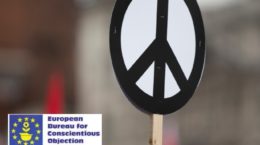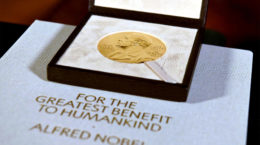As militarization and conflict escalate in Eastern Europe, traditional security approaches fail to ensure stability. The “Peace Line” strategy proposes demilitarization, denuclearization, building Peace infrastructure and permanent negotiation mechanisms to prevent further war. This vision offers a realistic roadmap for peace, prioritizing human rights and conflict resolution over military escalation.
Strategy for Building in Eastern Europe, Affected by the War in Ukraine
Content:
Introduction
Three Steps to the ‘Peace Line’ in Eastern Europe, Affected by the War in Ukraine
Conclusion
Introduction
The region of Eastern Europe (Belarus, Russia, Ukraine, the Baltic States, and Poland) is experiencing intensified militarization, escalating violence, and armed conflict. Over the past five years, even the most conservative estimates indicate that approximately two million people from Belarus, Ukraine, and Russia have become refugees. The war in Ukraine is profoundly destabilizing societies across Eastern Europe, exacerbating collective and historical traumas and deepening social inequalities.
Economic instability continues to worsen. In 2024, the region faced a severe crisis characterized by declining living standards, increased emigration, a contraction in industrial production, and disrupted trade flows. There is widespread anticipation of a new wave of military escalation between 2027 and 2030, further intensifying economic and social instability.
The conflict has devastated entire generations of men in Ukraine and Russia, destroyed critical infrastructure, and resulted in mass civilian casualties in Ukraine. Belarus, the Baltic States, and Poland face an increasing risk of deeper involvement in the war. Fundamental trust between countries, nations, and social groups has been eroded. Polarization, radicalization, xenophobia, and far-right sentiments are on the rise.
The regional security situation has deteriorated significantly since the signing of the Helsinki Accords in 1975.
The erosion of peaceful conflict resolution mechanisms and the growing militarization of the region are accelerating. Peaceful and diplomatic approaches to conflict resolution are being displaced by military build-ups and escalating militarization. The accession to military alliances is accompanied by rhetoric that legitimizes the use of force, increasing defense budgets, an arms race, and the philosophy of nuclear deterrence as a means of securing peace “on one’s own terms”. Once again, the world is divided into opposing blocs, while the threat of nuclear war and climate catastrophe has reached an unprecedented level. Violations of international law are becoming more frequent, and respect for state sovereignty is weakening. International mechanisms for the protection of human rights are increasingly failing to fulfill their intended functions, often turning into symbolic structures dependent on political considerations. The dismantling of key arms control treaties continues, alongside the ongoing modernization of nuclear arsenals. The integration of artificial intelligence into nuclear attack detection and retaliation decision-making processes significantly increases the risk of regional nuclear war due to system errors or miscalculations.
Business and technological ties are being dismantled through sanctions, while cultural and scientific exchanges are increasingly replaced by restrictions and the tightening of border controls. Western journalists are being expelled from Russia and Belarus, independent media outlets face systematic repression, and journalists are prosecuted under criminal charges. In the EU, restrictions on Russian media are being implemented, including indirect measures that create artificial barriers for independent and opposition-affiliated Russian media. Belarusian independent media, under financial pressure from Western institutions and forced NDA agreements, have been co-opted into low-quality propaganda tools, used for disinformation campaigns, defamation, and the harassment of independent actors within Belarusian civil society. The proliferation of bot farms and manipulative technologies is manufacturing artificial public narratives and fake-news, further eroding public trust in objective information.
Opposition movements and civil activists across various countries in the region are increasingly being designated, depending on the country, as “foreign agents,” extremists, or terrorists, as well as threats to national security. The powers of security agencies are being expanded, often allowing them to operate outside legal frameworks, leading to intensified surveillance, espionage, and unfounded accusations of collaboration with foreign intelligence services. A “witch hunt” policy is frequently directed against those who criticize militarization and the erosion of fundamental human rights principles. In public discourse and at the level of state decision-making, there is a growing tendency to label certain groups as “enemies of the state” based solely on their nationality, citizenship, or social status, including individuals who refuse military service on grounds of conscience.
Freedom of conscience, belief, and religion is increasingly under threat across all countries amid growing polarization of opinions. Artists, performers, and intellectuals face “civil death,” censorship, professional bans, and public harassment due to their personal views. Sanctions are being imposed, including dismissals and administrative prosecution, for “incorrect” cultural preferences, such as choices in music, film, and literature. The expansion of “necropolitical“1 zones—territories where the rule of law and human rights are effectively absent—is evident in all countries. National historical narratives are being rewritten for political purposes, with any questioning of their accuracy subject to criminal prosecution.
The future of global stability cannot rely solely on government decisions and political actors, as their primary focus in shaping a new security architecture for the region remains military security and an arms race—often at the expense of addressing pressing social, environmental, and economic challenges within their communities.
Real security means disarmament, the demilitarization of society, and the protection of human rights in all countries. Civil society must become a full-fledged participant in the negotiation process and peacebuilding efforts.
To prevent the further escalation of violent conflict and war, it is essential to establish a “Peace Line”—a demilitarized zone 60–100 kilometers wide on both sides of the border, along the borders of Russia, Belarus, Ukraine, and Europe, where, in one form or another, an “invisible frontline” already exists, even though active military operations have not yet begun in many countries.
Three Steps Toward the “Peace Line”
Mission / Long-Term Goal:
The establishment and implementation of a sustainable security architecture in the region based on an inclusive and humanistic approach to peace, both during the war in Ukraine and in the post-war period.
2.1. Demilitarization and Denuclearization of the Eastern Europe, Affected by the War in Ukraine
-
Establishment of a demilitarized zone: Creation of a demilitarized zone 60–100 km wide along the borders of Russia, Belarus, Ukraine, and the European Union countries.
-
Removal of nuclear weapons and nuclear warhead carriers: Complete withdrawal of nuclear weapons and their delivery systems from all states in the region, along with a cessation of the production and storage of nuclear arms within the “Peace Line” zone.
-
Withdrawal of foreign military bases and foreign troops from foreign territories:
-
Russia must withdraw its military bases from Belarus.
-
NATO must withdraw its forces, including German, Swedish, and other military units, from the Baltic states and Eastern Poland.
-
Russia must withdraw its troops from Belarus and the occupied territories of Ukraine.
-
-
Prohibition of any military exercises and troop buildup within the demilitarized zone.
-
Implementation of a mandatory “Peace Tax”: Introduction of a redistribution of 10% of all military budgets of the region’s countries to fund peace initiatives, including:
-
Restoration of ecosystems affected by military actions and the protection of the Baltic and Black Sea basins.
-
Addressing “necropolitics” and strengthening mechanisms for protecting refugees, migrants, national and other minorities.
-
Conflict resolution, reconciliation efforts, and addressing historical and collective traumas, as well as promoting nonviolent conflict resolution practices.
-
-
Initiation of a revision of the Budapest Memorandum to prevent nuclear escalation in the region, incorporating the precedent of the Åland Islands, to be termed Åland Memorandum / Budapest Memorandum 2.0.
-
Abolition of compulsory military service, recognition of the right to conscientious objection, and end to war propaganda among minors, cessation of criminal and administrative prosecution for refusal to serve in the military, release of all peace-related political prisoners, and the return of prisoners of war and deported children.
2.2. Development of Peace Infrastructure along the Frontline in Eastern Europe, affected by the war in Ukraine, including the promotion of a Culture of Peace and Peaceful Narratives
The development of peace infrastructure includes the promotion of a culture of peace and peaceful narratives aimed at overcoming conflicts and strengthening mutual understanding. Peace movements, religious, social, humanitarian, environmental, and feminist initiatives, as well as professional associations, trade unions, and local human rights organizations working to protect vulnerable groups, along with diaspora communities and their cross-border cooperation, must play a crucial role in this process.
• From a Culture of the Enemy to a Culture of Dignity
Culture of the Enemy – A system in which power structures or influential groups create and sustain the idea of an external or internal enemy (a constructed, fictionalized, and demonized image that does not necessarily correspond to reality), provoking fear and hatred.
Culture of Dignity – A system of values and perspectives based on recognizing the intrinsic worth of every individual, respecting their rights, acknowledging their capacity for conscious action, and upholding their right to make mistakes and correct them.
The deprivation of dignity occurs through manipulation, propaganda, social humiliation, and economic instability/poverty.
• From a Cancel Culture to a Culture of Dialogue
Cancel culture is a social phenomenon in which individuals, companies, or organizations face mass condemnation, boycotts, or repression in response to their unpopular or nonconforming views, particularly those that contradict state ideology. This can lead to job loss, reputational damage, social exclusion, and even criminal prosecution. A culture of dialogue promotes inclusivity, respect for diverse perspectives, and the rejection of public pressure, harassment, and repression as tools of punishment.
• From a Culture of Revenge to a Culture of Reconciliation
A culture of reconciliation does not imply a rejection of justice but rather a transition to a conflict resolution model that eliminates the desire for revenge and retribution. Overcoming the legacy of violence, war, and hostility requires a comprehensive approach based on restoring justice, building trust in legitimate (transnational) judicial mechanisms, providing support and rehabilitation for victims and affected individuals, developing new cultural and legal norms, creating safe spaces for sustainable dialogue.
2.3. Establishing Permanent Negotiation Mechanisms
• “Helsinki 2.0” / “Helsinki 50+”: The Need to Renew Dialogue
Following the dissolution of the USSR (1992–2003), there was significant rapprochement between Russia and the West, culminating in the signing of the NATO-Russia Founding Act in 1997 and discussions on Russia’s potential NATO membership. However, two decades later, dialogue has been severed, underscoring the urgent need for its renewal.
A permanent negotiation table should be established, where all nine nuclear-armed states are represented with equal participation from civil society and government institutions (50/50). Naturally, China must be included, given its demonstrated openness toward the Treaty on the Prohibition of Nuclear Weapons (TPNW) and its status as the only nuclear power that has officially ruled out a first nuclear strike. In this context, the engagement of intellectuals, activists, and experts is necessary to analyze the failures of previous international agreements, extract lessons, and prevent the repetition of past mistakes. Key negotiation topics should include the return of deported children and prisoners of war, security guarantees for those subjected to forced displacement, a ban on the deployment of nuclear weapons within the “Peace Line” and etc.
• Establishment of the Working Group WG9
An expert group (WG9), composed of representatives from the government and non-governmental sectors of the nine nuclear-armed states, should be formed to develop a realistic “roadmap” for coordinated multilateral disarmament.
This roadmap should serve as the basis for negotiations among nuclear states and their allies, facilitating the global adoption of the TPNW, including a “no-first-use” agreement among nuclear states, a ban on “mini-nuclear warheads”, to be incorporated into Article 1 of the TPNW, withdrawal of nuclear weapons from allied states (Italy, Germany, Belgium, the Netherlands, Turkey, Belarus), elimination of all nuclear-capable missile systems, preventing the deployment of new Euro-missiles in both the West and East, drawing from the experience of international mobilization that led to the INF Treaty in 1987 and etc.
• Special Session of the UN General Assembly
A permanent special session of the UN General Assembly should be convened to ensure continuous negotiations aimed at securing peace in Eastern Europe in the context of the war in Ukraine.
It is crucial to note that a veto by Russia or Ukraine will not be applicable, as Article 27 (Paragraph 3) of the UN Charter states that “a party to a dispute shall abstain from voting.” This mechanism would prevent the paralysis of the UN Security Council, ensuring that negotiations remain effective.
• Global Disarmament and the “Earth Constitution”
The complete elimination of nuclear weapons remains a long-term goal. A supranational mechanism should be established to govern global challenges, including nuclear disarmament and the climate crisis.
Conclusion
The strategy for establishing the “Peace Line” along the “Frontline” in the region affected by the war in Ukraine represents an alternative approach to security, focused on demilitarization, rebuilding trust, and fostering sustainable peace. It is based on the understanding that military escalation and the arms race not only fail to ensure long-term security but also exacerbate social, economic, and environmental crises.
The implementation of this strategy is only possible with the active participation and engagement of civil society, international organizations, independent experts, human rights defenders, and peace movement activists. Sustainable peace cannot be achieved without recognizing shared responsibility for regional security and adopting measures that go beyond traditional military strategies.
History has shown that any attempt to resolve conflicts solely through military force leads only to further cycles of violence and war. An alternative path requires complex but essential efforts to rebuild trust, overcome historical contradictions, and establish lasting conditions for peaceful coexistence and good-neighborly relations.
The “Peace Line” is not a utopia—it is a strategic vision for the future, where security is built not on fear and armament but on the principles of good-neighborliness, respect for human rights, and a humanistic approach to conflict resolution. Its realization will require joint efforts from all stakeholders, but it is precisely this approach that can lead to lasting peace and stability in Eastern Europe and beyond.








